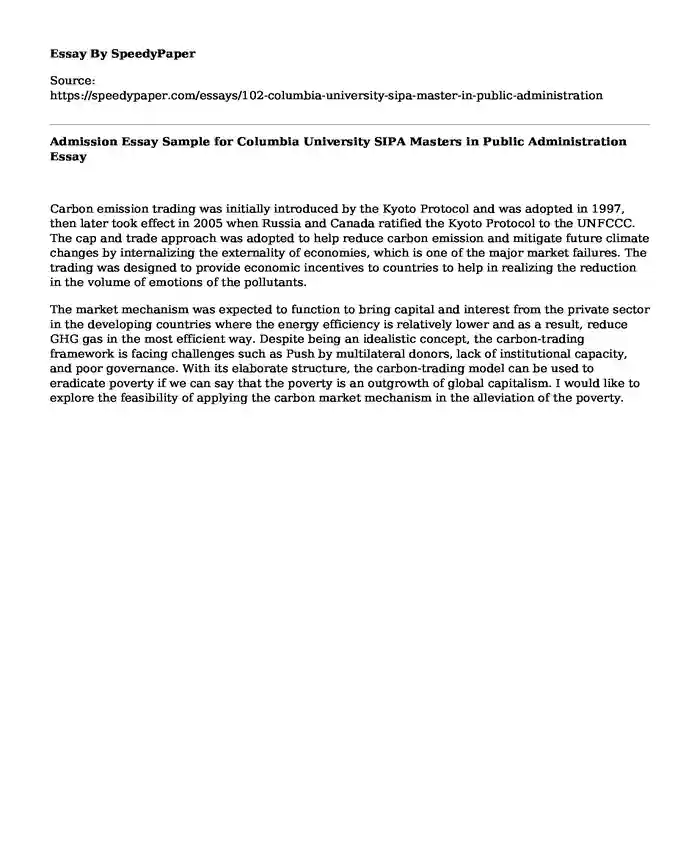
| Essay type: | Admission essays |
| Categories: | Admission help Application letter Public administration |
| Pages: | 1 |
| Wordcount: | 193 words |
Carbon emission trading was initially introduced by the Kyoto Protocol and was adopted in 1997, then later took effect in 2005 when Russia and Canada ratified the Kyoto Protocol to the UNFCCC. The cap and trade approach was adopted to help reduce carbon emission and mitigate future climate changes by internalizing the externality of economies, which is one of the major market failures. The trading was designed to provide economic incentives to countries to help in realizing the reduction in the volume of emotions of the pollutants.
The market mechanism was expected to function to bring capital and interest from the private sector in the developing countries where the energy efficiency is relatively lower and as a result, reduce GHG gas in the most efficient way. Despite being an idealistic concept, the carbon-trading framework is facing challenges such as Push by multilateral donors, lack of institutional capacity, and poor governance. With its elaborate structure, the carbon-trading model can be used to eradicate poverty if we can say that the poverty is an outgrowth of global capitalism. I would like to explore the feasibility of applying the carbon market mechanism in the alleviation of the poverty.
Cite this page
Admission Essay Sample for Columbia University SIPA Masters in Public Administration. (2018, Mar 05). Retrieved from https://speedypaper.com/essays/102-columbia-university-sipa-master-in-public-administration
Request Removal
If you are the original author of this essay and no longer wish to have it published on the SpeedyPaper website, please click below to request its removal:
- Impacts of Personality Traits on Socialization, Essay Example
- Free Essay Sample: Serial Killers - Myths and Reality
- Response Essay Sample: The Nether Play
- Social, Emotional, and Personal Development - Essay Example
- Free Paper Sample: Work-Family Conflict Impact on Job Satisfaction of Correctional Officers
- Essay Example Dedicated to HIV Prophylaxis Following Occupational Exposure
- Free Essay Example. National Football League
Popular categories




